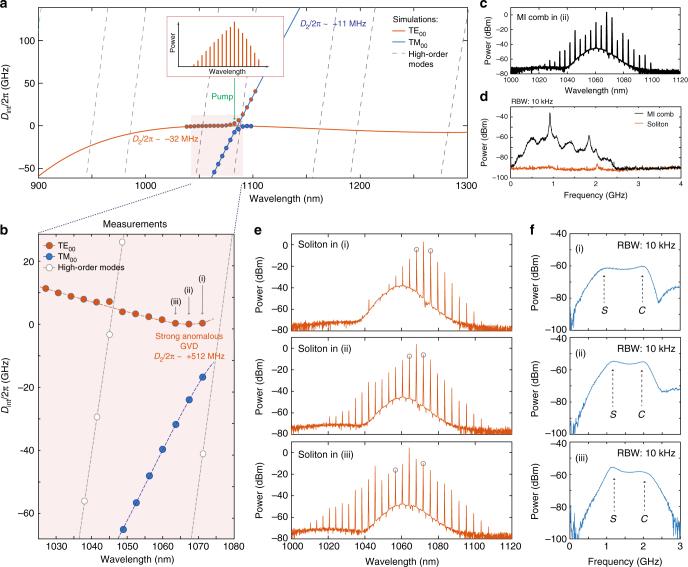Fig. 4.
Dissipative Kerr solitons in hybridised modes. a Scheme of the avoided mode crossing formation. Solid and dashed lines show the simulated integrated dispersion for the fundamental and high-order modes of 1-THz Si3N4 microresonator with dimensions of 1.45 × 0.74 μm. Red and blue circles schematically indicate the dispersion profile of the hybridised modes forming AMX. b Measurements54 of the mode structure of a 1-THz Si3N4 microresonator with the dimensions of 1.45 × 0.74 μm simulated in (a). Mode families are distinguished based on their FSRs. General dispersion trends cannot be faithfully identified due to the bandwidth limitations of our measurement setup, however a strong local anomalous group–velocity dispersion for three consecutive resonances (i), (ii), (iii) of the TE00 mode family above 1064 nm can be observed. Dashed lines fit the integrated dispersion of different modes within the measurements range. c Optical spectrum of a noisy comb state, obtained in resonance (ii) from (b). d Intensity noise measurements of the noisy modulation-instability comb (MI comb, black) and the dissipative Kerr soliton (soliton, red) states, obtained by pumping the resonance (i) from (b). e Optical spectra of the DKS states obtained by pumping resonances (i), (ii), (iii) from b. Grey circles indicate the positions of primary comb lines. f Response measurements of DKS states represented in (e). The positions of characteristic -resonance and -resonance are indicated with C and S letters, correspondingly

